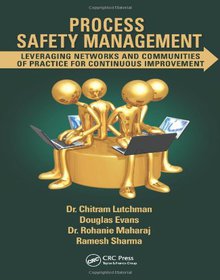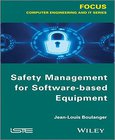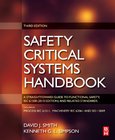Process Safety Management
Leveraging Networks and Communities of Practice for Continuous Improvement

Book Details:
| Publisher: | CRC Press |
| Series: | CRC Press , Practice |
| Author: | Douglas Evans |
| Edition: | 1 |
| ISBN-10: | 1466553618 |
| ISBN-13: | 9781466553613 |
| Pages: | 244 |
| Published: | Jul 03 2013 |
| Posted: | Jan 20 2015 |
| Language: | English |
| Book format: | |
| Book size: | 6.39 MB |
Book Description:
The continued prevalence of major incidents (most recently the 2010 BP Gulf of Mexico Oil Spill) and preponderance of workplace fatalities and injuries as well as Process Safety Management (PSM) Incidents, globally, begs the question: why do incidents continue to occur in todays technologically advanced era? More importantly, with 80-85 percent of incidents being repeated, the more obvious questions are: Why do organizations fail to learn from prior incidents internal to the business? Why do organizations fail to learn from their peers and other same industry players? Why do organizations fail to learn from the incidents and experiences of other industries? Process Safety Management: Leveraging Networks and Communities of Practice for Continuous Improvement provides a road map organizations can use to identify and setup critical networks for preventing catastrophic incidents and for sharing knowledge in an organized manner within the organization to enhance business performance. The book helps organizations establish centers of excellence by activating networks for generating best practices and practical solutions to workplace business, and safety challenges. The book covers the full range of activation of networks including identifying members, defining goals and objectives, and prioritizing work through leadership and stewardship of networks. It addresses all elements of effective safety management and includes simple, easy-to-follow processes that bring about lasting changes to workplace safety. It also highlights the health and safety needs of both Generation X and Generation Y who currently inherit the workplace but are very different in learning behaviors and experience levels. In a thin margins business environment characterized by scarce resources, operational discipline and excellence drives stakeholder confidence and corporate performance. Detailing the practical application of tested principles and practices, this book provides a simple path forward for organizations to recognize the benefits of networks and to proactively establish and support them within organizations to generate continuous and sustained improvement in work practices, procedures, and business performance.
Download Link:
Related Books:
Safety Management of Software-based Equipment
A review of the principles of the safety of softwarebasedequipment, this book begins by presenting the definition principlesof safety objectives. It then moves on to show how it is possibleto define a safety architecture (including redundancy,diversification, errordetection techniques) on the basis of safetyobjectives and how to identify objectives related to softwareprograms. From software objectives, the authors present thedifferent safety techniques (fault detection, redundancy andquality control). Certifiable system aspects aretaken into account throughout the book. Contents 1. Safety Management.2. From System to Software.3. Certifiable Systems.4. Risk and Safety Levels.5. Principles of Hardware Safety.6. Principles of Software Safety.7. Ce...
Safety Critical Systems Handbook
A straightfoward guide to functional safety, IEC 61508 and related standarts, including process IEC 61511 and machinery IEC 62061 and ISO 13849
3rd Edition
Safety Critical Systems Handbook: A Straightfoward Guide to Functional Safety, IEC 61508 (2010 Edition) and Related Standards, Including Process IEC 61511 and Machinery IEC 62061 AND ISO 13849, Third Edition, offers a practical guide to the functional safety standard IEC 61508. The book is organized into three parts. Part A discusses the concept of functional safety and the need to express targets by means of safety integrity levels. It places functional safety in context, along with risk assessment, likelihood of fatality, and the cost of conformance. It also explains the life-cycle approach, together with the basic outline of IEC 61508 (known as BS E...
Multi-objective Management in Freight Logistics
Increasing Capacity, Service Level and Safety with Optimization Algorithms
The complexity of modern supply chains requires decision makers in logistics to work with a set of efficient (Pareto optimal) solutions, mainly to catch different economic aspects for which one optimal solution related to a single objective function is not able to capture entirely. Motivated by this, Multi-objective Management in Freight Logistics provides a detailed study of freight transportation systems, with a specific focus on multi-objective modeling. The book provides decision makers with new methods and tools to implement multi-objective optimization models in logistics, combining theoretical aspects with applications, showing the advantages and the drawbacks of adopting scalarization techniques, and when it is worthwhile to reduce the proble...
2007 - 2021 © eBooks-IT.org



